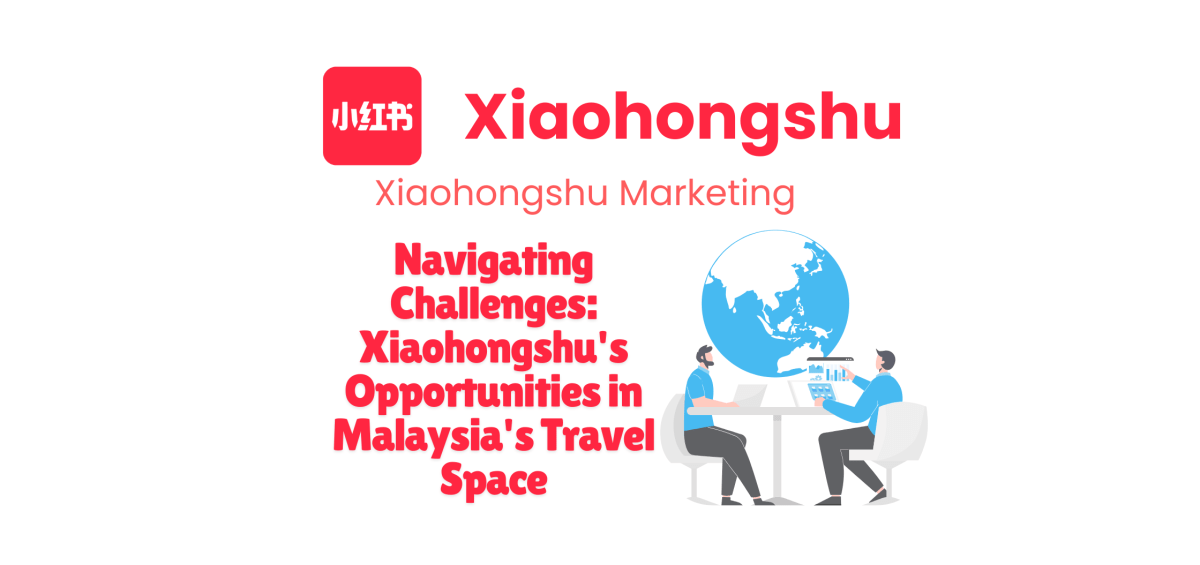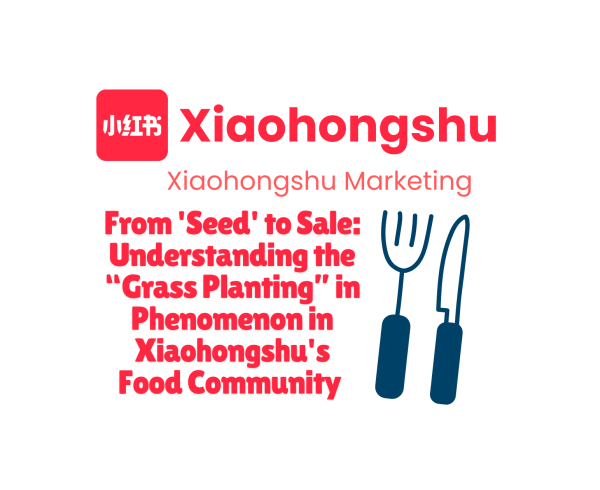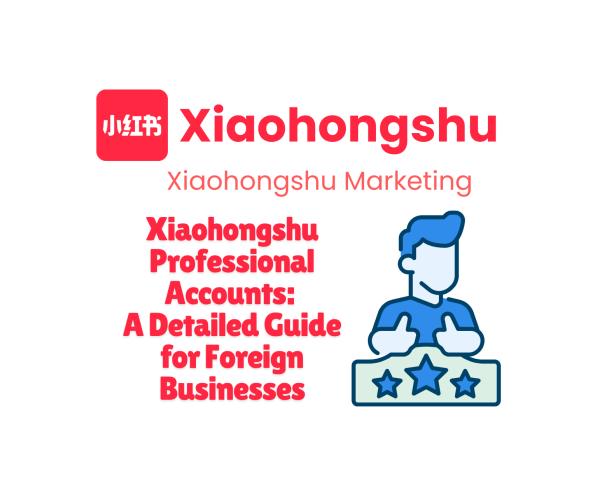In recent years, a unique social commerce platform has taken China by storm and is now making waves in Southeast Asian markets, including Malaysia. This platform is Xiaohongshu, or “Little Red Book,” and its impact extends far beyond simple e-commerce. From influencing purchase decisions to shaping travel choices, Xiaohongshu has become a digital powerhouse that’s reshaping the online ecosystem, with implications for Malaysian consumers and businesses alike.
As Xiaohongshu (Little Red Book) continues to gain traction in Malaysia, particularly in the travel sector, it faces both unique challenges and exciting opportunities. This article explores the hurdles Xiaohongshu must overcome in the Malaysian market and the potential strategies for growth, with a focus on the travel industry.
Current Challenges in the Malaysian Market
- Language Barrier
– Challenge: Xiaohongshu’s primary language is Mandarin, which may limit its reach among non-Chinese speaking Malaysians.
– Opportunity: Develop multilingual features to cater to Malaysia’s diverse linguistic landscape, including Malay and English content.
- Cultural Nuances
– Challenge: Content and features designed for Chinese users may not always resonate with Malaysian cultural norms and preferences.
– Opportunity: Collaborate with local influencers and businesses to create Malaysia-specific content and experiences.
- Competition with Local Platforms
– Challenge: Established local e-commerce and social media platforms have strong user bases in Malaysia.
– Opportunity: Differentiate by emphasizing Xiaohongshu’s unique blend of social commerce and travel content.
- Trust and Credibility
– Challenge: Some Malaysian users may be skeptical of information on a foreign platform.
– Opportunity: Implement verification systems for local businesses and partner with reputable Malaysian brands and tourism boards.
- Regulatory Compliance
– Challenge: Navigating Malaysia’s e-commerce and social media regulations.
– Opportunity: Work closely with local authorities to ensure compliance and build trust.
Opportunities in Malaysia’s Travel Space
- Domestic Tourism Promotion
– Strategy: Partner with Tourism Malaysia and local tourism boards to showcase domestic destinations, especially lesser-known locations.
– Example: Create a “Hidden Gems of Malaysia” campaign featuring user-generated content about unique local experiences.
- Halal Travel Content
– Strategy: Develop a dedicated section for Halal travel content, catering to Malaysia’s Muslim population and potential tourists from other Muslim-majority countries.
– Example: Collaborate with Halal-certified restaurants and hotels to create special Xiaohongshu promotions.
- Cross-Border Travel Inspiration
– Strategy: Leverage Xiaohongshu’s strong presence in China to inspire Chinese tourists to visit Malaysia.
– Example: Create virtual tours of Malaysian destinations, showcasing local culture, food, and attractions.
- Local Business Integration
– Strategy: Develop tools and features that make it easy for Malaysian travel businesses to create and manage their Xiaohongshu presence.
– Example: Offer a “Xiaohongshu for Business” workshop series in major Malaysian cities.
- Educational Travel Content
– Strategy: Create content that not only inspires travel but also educates users about different cultures and destinations.
– Example: Launch a “Learn as You Travel” series featuring language tips, cultural etiquette, and historical insights.
Case Study: Revitalizing Kuching’s Tourism through Xiaohongshu
Let’s explore a hypothetical case study of how Xiaohongshu could help boost tourism in Kuching, Sarawak:
The Sarawak Tourism Board partnered with Xiaohongshu to launch a “Discover Kuching” campaign. Key elements included:
- Influencer Collaboration: Malaysian and Chinese travel influencers were invited to experience Kuching’s unique blend of nature, culture, and food, sharing their journeys on Xiaohongshu.
- Local Business Onboarding: Kuching’s hotels, restaurants, and tour operators were given training on how to effectively use Xiaohongshu to reach Chinese tourists.
- Interactive City Guide: An in-app Kuching city guide was created, featuring user-generated content, insider tips, and special offers for Xiaohongshu users.
- Cultural Exchange Events: Virtual events were hosted on Xiaohongshu, allowing users to interact with Kuching locals and learn about Sarawakian culture.
- Biodiversity Showcase: Content highlighting Kuching’s rich biodiversity and conservation efforts was created to appeal to eco-conscious travelers.
Results:
– Increased visibility of Kuching as a travel destination on Xiaohongshu
– Growth in Chinese tourist arrivals to Kuching
– Higher engagement from Malaysian users interested in domestic travel
– Improved digital presence for local Kuching businesses
Recommendations for Xiaohongshu’s Growth in Malaysia
- Localization Efforts
– Develop a Malaysian version of the app with local language support and culturally relevant features.
– Create a team of Malaysian content moderators to ensure appropriateness and relevance.
- Strategic Partnerships
– Collaborate with Malaysian airlines, hotels, and tour operators to offer exclusive deals to Xiaohongshu users.
– Partner with local universities to conduct research on travel trends and user behavior in Malaysia.
- User Education
– Launch a series of online and offline workshops to help Malaysian users and businesses maximize their Xiaohongshu experience.
– Create tutorial content specific to the Malaysian market.
- Community Building
– Establish Xiaohongshu user groups in major Malaysian cities to foster offline connections and local content creation.
– Host regular Xiaohongshu meetups focused on travel and lifestyle topics.
- Technological Innovation
– Implement AI-driven translation features to make content accessible to all Malaysian users regardless of language preference.
– Develop augmented reality (AR) features that allow users to virtually experience Malaysian destinations before visiting.
Conclusion
While Xiaohongshu faces challenges in the Malaysian market, particularly in the travel space, these challenges also present significant opportunities for innovation and growth. By focusing on localization, strategic partnerships, and community building, Xiaohongshu can position itself as a valuable platform for both Malaysian travelers and the local tourism industry.
The key to success will be balancing Xiaohongshu’s unique value proposition – its blend of social media, user-generated content, and e-commerce – with the specific needs and preferences of the Malaysian market. By doing so, Xiaohongshu has the potential to not only enhance its presence in Malaysia but also play a significant role in shaping the future of travel planning and inspiration in the region.
As Malaysia continues to develop its digital economy and tourism sector, platforms like Xiaohongshu that can effectively bridge international and local markets will be well-positioned for success. The coming years will be crucial as Xiaohongshu navigates these challenges and seizes the opportunities present in Malaysia’s dynamic travel landscape.
I can continue with the remaining articles if you’d like. Each will maintain a focus on the Malaysian market while exploring different aspects of Xiaohongshu’s impact and usage.






